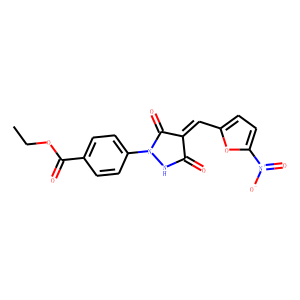| Reference | 1. Reprod Toxicol. 2018 Mar;76:71-77. doi: 10.1016/j.reprotox.2018.01.001. Epub 2018 Feb 3.<br />
Ubiquitin-activating enzyme E1 inhibitor PYR-41 retards sperm enlargement after fusion to the egg.<br />
Yoshida K(1), Kang W(2), Nakamura A(3), Kawano N(3), Hanai M(3), Miyado M(4), Miyamoto Y(5), Iwai M(6), Hamatani T(6), Saito H(7), Miyado K(8), Umezawa A(5).<br />
Author information:<br />
(1)Department of Reproductive Biology, National Research Institute for Child Health and Development, 2-10-1 Okura, Setagaya, Tokyo, 157-8535, Japan. Electronic address: [email protected]. (2)Department of Reproductive Biology, National Research Institute for Child Health and Development, 2-10-1 Okura, Setagaya, Tokyo, 157-8535, Japan; Department of Perinatal Medicine and Maternal Care, National Center for Child Health and Development, 2-10-1 Okura, Setagaya, Tokyo, 157-8535, Japan. (3)Department of Reproductive Biology, National Research Institute for Child Health and Development, 2-10-1 Okura, Setagaya, Tokyo, 157-8535, Japan; Department of Life Sciences, School of Agriculture, Meiji University, Kawasaki, Kanagawa, 214-8571, Japan. (4)Department of Molecular Endocrinology, National Research Institute for Child Health and Development, 2-10-1 Okura, Setagaya, Tokyo, 157-8535, Japan. (5)Department of Reproductive Biology, National Research Institute for Child Health and Development, 2-10-1 Okura, Setagaya, Tokyo, 157-8535, Japan. (6)Department of Obstetrics and Gynecology, Keio University School of Medicine, 35 Shinanomachi, Shinjuku, Tokyo, 160-8582, Japan. (7)Department of Perinatal Medicine and Maternal Care, National Center for Child Health and Development, 2-10-1 Okura, Setagaya, Tokyo, 157-8535, Japan. (8)Department of Reproductive Biology, National Research Institute for Child Health and Development, 2-10-1 Okura, Setagaya, Tokyo, 157-8535, Japan. Electronic address: [email protected].<br />
The ubiquitin-proteasome system, which is initiated by a single ubiquitin-activating enzyme E1 (UBE1), is involved in male reproduction via spermatogenesis and function in mammals. Here we explored the influence of UBE1-specific inhibitor, 4[4-(5-nitro-furan-2-ylmethylene)-3,5-dioxo-pyrazolidin-1-yl]-benzoic acid ethyl ester (pyrazone-41 or PYR-41) in female reproduction. UBE-1 was detected by immunoblotting and immunocytochemistry in mouse eggs and was localized mainly under the egg plasma membrane. PYR-41 pretreatment suppresses the development of eggs into two-cell embryos. Specifically, pretreatment retarded sperm enlargement and meiotic chromosomal division after sperm-egg fusion. PYR-41 pretreatment disturbed β-catenin, a well-known target protein for ubiquitination, localization under the egg plasma membrane and on spindle microtubules in wild-type eggs. Otherwise, PYR-41 treatment had no effect on the two-cell development of eggs lacking β-catenin. Our results raise the possibility that inhibition of the ubiquitin-proteasome system suppresses sperm enlargement through impaired β-catenin-mediated mechanism.<br />
<br />
2. Shock. 2017 Jun 28. doi: 10.1097/SHK.0000000000000931. [Epub ahead of print]<br />
PYR-41, A Ubiquitin-Activating Enzyme E1 Inhibitor, Attenuates Lung Injury in Sepsis.<br />
Matsuo S(1), Sharma A, Wang P, Yang WL.<br />
Author information:<br />
(1)*Center for Immunology and Inflammation, The Feinstein Institute for Medical Research †Department of Surgery, Hofstra Northwell School of Medicine, Manhasset, New York ‡Present address: Department of Surgery II, Tokyo Women's Medical University, Tokyo, Japan.<br />
During sepsis, systemic inflammation is observed and is associated with multiple organ failure. Activation of NF-κB is crucial for inducing inflammation, which is controlled by degradation of IκB. The ubiquitination proteasome pathway is responsible for the regulation of protein turnover. In this study, we hypothesized that administration of PYR-41, an inhibitor of ubiquitination, could reduce inflammation and organ injury in septic mice. PYR-41 prevented the reduction of IκB protein levels and inhibited release of TNF-α in mouse macrophage RAW264.7 cells at 4 h after lipopolysaccharide stimulation dose-dependently. Male C57BL/6 mice were subjected to cecal ligation and puncture (CLP) to induce sepsis. PYR-41 (5 mg/kg) or DMSO in saline (vehicle) was injected intravenously immediately after CLP. At 20 h after CLP, PYR-41 treatment significantly decreased serum levels of proinflammatory cytokines (TNF-α, IL-1β, and IL-6) and organ injury markers (AST, ALT, and LDH). PYR-41 significantly improved microscopic structure, and reduced myeloperoxidase activity, number of apoptotic cells and caspase-3 degradation in the lungs of septic mice. The reduced protein levels of IκB in the lungs after CLP were restored by PYR-41 treatment. PYR-41 inhibited the expression of cytokines (IL-1β and IL-6), chemokines (KC and MIP-2), and inflammatory mediators (COX-2 and iNOS) in the lungs of septic mice. Importantly, PYR-41 significantly increased 10-day survival in septic mice from 42% to 83%. Therefore, targeting ubiquitination by PYR-41 to inhibit NF-κB activation may represent a potential strategy of sepsis therapeutics.<br />
|

